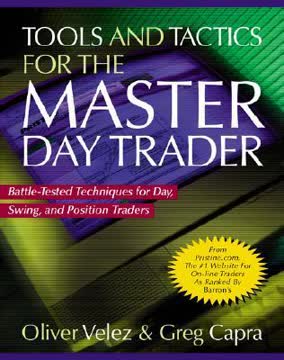Key Takeaways
1. Master Trading Requires a Prepared Mindset
Proper trading, in many respects, is a byproduct of proper “thinking.”
Mindset over Method. The book emphasizes that successful trading begins with a prepared mind. It's not just about having the right tools or techniques, but about cultivating the right mental attitude, discipline, and emotional control. Aspiring traders must understand the demanding nature of the profession and be willing to pay the price in terms of time, effort, and emotional resilience.
The Cost of Mastery. The path to becoming a master trader is not easy. It requires relentless effort, a willingness to learn from losses, and the ability to overcome psychological and emotional challenges. Those who seek quick riches or underestimate the demands of the profession are likely to fail.
Embrace the Journey. The book encourages traders to view their journey as a "magnificent obsession," fueled by a burning desire to achieve trading mastery. This passion will provide the resilience needed to survive the initial challenges and persevere through difficult times.
2. Technical Analysis: The Trader's X-Ray
Charts are the footprints of money. And let me tell you something, they don't lie.
Technicals over Fundamentals. The book advocates for a technical approach to trading, emphasizing the importance of charts, price patterns, and volume characteristics. While fundamental analysis has its place, technicals provide a more immediate and accurate assessment of market sentiment and potential trading opportunities.
Charts as Truth-Tellers. Charts graphically display the "footprints" of money, revealing the collective psychology of market participants. They offer a factual representation of buying and selling activity, unfiltered by potentially misleading news, analyst reports, or corporate statements.
Interpreting the Message. Technical setups and chart patterns are not guarantees of future price movements, but rather guides that help traders assess the odds of a particular play. The astute trader learns to interpret both successful and failed patterns, recognizing that even failures can provide valuable information about shifts in market sentiment.
3. Embrace Losses as Tuition, Not Defeats
Make your losses work for you.
Losses as Learning Opportunities. The book challenges the common perception of losses as failures, instead framing them as valuable learning experiences. Every losing trade provides an opportunity to identify mistakes, refine strategies, and develop a deeper understanding of the market.
The Journal of Losers. The book recommends keeping a "journal of losers" to track and analyze losing trades. By identifying recurring patterns and common denominators, traders can pinpoint their weaknesses and develop strategies to overcome them.
Resilience and Growth. The true measure of a successful trader is not the ability to avoid losses, but the ability to persevere through them. By viewing losses as a necessary part of the learning process, traders can develop the resilience and mental fortitude needed to succeed in the long run.
4. Education: Invest in Your Trading Future
Don't be cheap with your future.
Mentorship and Guidance. The book emphasizes the importance of finding a mentor or teacher who can provide guidance, share knowledge, and help navigate the pitfalls of the market. A good teacher can significantly accelerate the learning process and prevent years of wasted time and money.
Character of the Teacher. The character and integrity of the teacher are just as important as their knowledge. Look for someone who is not only a successful trader but also possesses qualities like passion, enthusiasm, and a genuine desire to help others succeed.
Commitment to Learning. Aspiring traders must be willing to invest in their education, both financially and in terms of time and effort. This includes attending seminars, reading books, and continuously seeking new knowledge and skills.
5. Conquer the Seven Deadly Sins of Trading
I know not what course others may take, but as for me, give me the technicals, or give me death.
Avoiding Common Pitfalls. The book identifies seven deadly sins that can derail a trader's success:
- Failing to cut losses short
- Dollar counting
- Switching time frames
- Needing to know more
- Becoming too complacent
- Winning the wrong way
- Rationalizing
Self-Awareness and Discipline. Overcoming these sins requires self-awareness, discipline, and a commitment to following a well-defined trading plan. Traders must be able to recognize their own weaknesses and develop strategies to combat them.
Killing Your Deadliest Demon. The book encourages traders to identify their deadliest demon and focus on eradicating it from their trading behavior. This requires honesty, self-reflection, and a willingness to confront uncomfortable truths.
6. Short-Term Focus: The Path to Higher Accuracy
The astute swing trader knows that the odds of being right over the next few days, as opposed to the next few years, are immeasurably greater.
Accuracy and Time Frame. The book argues that accuracy in market predictions decreases as the time frame expands. Short-term traders have a higher probability of success because they are operating in a more predictable environment.
The Here and Now. The book advocates for a focus on the "Here and Now," emphasizing the importance of making trading decisions based on current market conditions and short-term trends. Traders should avoid getting bogged down in long-term forecasts or dwelling on past events.
Nimbleness and Adaptability. Short-term traders have the advantage of being able to adapt quickly to changing market conditions. They can switch sides, adjust their strategies, and capitalize on short-term opportunities that long-term investors may miss.
7. Trade People, Not Stocks
You do not trade stocks, you trade people.
Understanding Market Psychology. The book emphasizes that successful trading is not about analyzing companies or economic data, but about understanding the psychology of market participants. Stock prices are driven by human emotions like greed, fear, and uncertainty.
Identifying the "Idiot." Successful trading involves finding two sets of ill-informed individuals: those willing to sell their merchandise too cheaply and those willing to buy your merchandise too expensively. The goal is to avoid being the "idiot" on the other side of the trade.
Charts as Emotional Barometers. Charts provide a visual representation of market psychology, revealing the collective emotions of buyers and sellers. By studying charts, traders can gain insights into the prevailing sentiment and anticipate potential price movements.
8. Love the Process, Not Just the Profits
My secret weapon is my sheer, unadulterated love for trading.
Passion and Dedication. The book emphasizes the importance of having a genuine love for trading, not just a desire for profits. This passion will provide the motivation needed to overcome challenges, persevere through difficult times, and continuously improve your skills.
Intrinsic Motivation. Traders who are motivated by the process of trading are more likely to develop the discipline, skill, and intelligence needed to succeed. They are less likely to be swayed by emotions or driven by greed.
Love as a Competitive Advantage. A deep love for trading can be a powerful competitive advantage, allowing traders to outlast the crowd and make better decisions in the face of pressure. It provides the resilience needed to endure setbacks and the motivation to continuously learn and improve.
9. Master the Art of Selective Action
Don't just do something, stand there.
Inaction as a Strategy. The book challenges the notion that constant activity is necessary for success. It emphasizes the importance of knowing when to stand still, observe the market, and wait for the right opportunity to present itself.
Avoiding Forced Trades. Traders who feel compelled to be in the market at all times are more likely to force trades, deviate from their plans, and make costly mistakes. Learning to recognize when no action is the best action is a crucial skill for long-term success.
Clarity and Composure. Periods of inaction provide an opportunity to regain composure, clear the mind, and develop a more objective perspective on the market. This can lead to better decision-making and more profitable trades.
10. The Power of Knowing Your Market
Charts are the footprints of money.
Market Timing is Key. The book stresses the importance of understanding market timing and using tools to assess the overall market's health. This knowledge helps traders align their strategies with the prevailing trends and avoid getting caught on the wrong side of a major move.
The Mighty Five Index. The book introduces the "Mighty Five Index," a mini-index of five key stocks (General Electric, Citigroup, Microsoft, America Online, and General Motors) that can provide valuable insights into the overall market's condition.
Internal Gauges. The book recommends using internal gauges like the NYSE TICK indicator and the NYSE TRIN to gain a deeper understanding of market sentiment and identify potential turning points.
11. Execution is Key: Tools and Tactics
A proper entry is 85 percent of winning trade.
Mastering Order Placement. The book emphasizes that successful trading is not just about identifying opportunities, but also about executing trades effectively. Master traders must understand the various order types and execution venues available to them and choose the best option for each situation.
ECNs, SOES, and SuperDOT. The book provides a detailed overview of the different order execution systems available to traders, including Electronic Communication Networks (ECNs), the Small-Order Execution System (SOES), and the SuperDOT system.
The Art of the Entry. The book stresses that the entry point is the most critical aspect of a trade. A well-timed entry can significantly increase the probability of success, while a poorly timed entry can doom a trade from the start.
12. Continuous Learning: The Master Trader's Journey
You are a leader.
The Never-Ending Quest. The book emphasizes that becoming a master trader is a lifelong journey, not a destination. Traders must be committed to continuous learning, self-improvement, and adaptation to changing market conditions.
Embrace the Process. The book encourages traders to focus on the process of trading, rather than solely on the outcome. By mastering the fundamentals, developing sound strategies, and cultivating the right mindset, success will naturally follow.
You Are a Leader. The book concludes by reminding traders that they are leaders on their own journey, capable of achieving their goals through dedication, perseverance, and a commitment to excellence.
Last updated:
FAQ
1. What is Tools and Tactics for the Master Day Trader by Oliver Velez about?
- Comprehensive trading manual: The book is a detailed guide for day, swing, and position traders, focusing on both the psychological and tactical aspects of trading.
- Emphasis on mindset: Velez stresses that successful trading is rooted in proper thinking, discipline, and emotional mastery.
- Practical tools and techniques: Readers are taught step-by-step methods for market timing, charting, execution, and trade management to trade like professionals.
2. Why should I read Tools and Tactics for the Master Day Trader by Oliver Velez?
- Real-world trading experience: Velez shares hard-earned lessons from his own journey, including early failures and eventual success.
- Focus on psychological mastery: The book addresses the mental challenges of trading, such as fear, greed, and discipline, which are often the root causes of failure.
- Actionable strategies: It provides practical, battle-tested laws, tactics, and tools that can be implemented immediately to improve trading results.
3. What are the key takeaways from Tools and Tactics for the Master Day Trader by Oliver Velez?
- Trading mastery is costly: Success requires relentless effort, discipline, and learning from losses; the "tuition" is high but the rewards are great.
- Technical analysis is crucial: Charts reveal market psychology and are more reliable for short-term trading than fundamentals.
- Entry timing is critical: Proper entry accounts for 85% of a trade's success, making timing and placement essential.
- Psychology over everything: The right mindset and emotional control are responsible for the majority of trading success.
4. What are the "12 Trading Laws of Success" according to Oliver Velez?
- Know yourself and your enemy: Understand your own psychology and recognize that your biggest adversary is often yourself.
- Prioritize education and capital preservation: Seek mentorship and always protect your trading capital with stop losses.
- Keep it simple and focused: Avoid overcomplicating strategies, concentrate on a few reliable setups, and don't over-diversify.
- Learn from losses and take responsibility: Use a trading journal, never make excuses, and treat every loss as a learning opportunity.
5. How does Oliver Velez define "proper trading" in Tools and Tactics for the Master Day Trader?
- Trading people, not stocks: Success comes from understanding the psychology and behavior of other market participants.
- Focus on short-term action: Velez advocates trading within 2 days to 2 weeks for higher accuracy, avoiding long-term predictions.
- Technical analysis over fundamentals: Real-time chart analysis is favored for its ability to reveal market sentiment and opportunities.
6. What are the most important psychological lessons in Tools and Tactics for the Master Day Trader by Oliver Velez?
- Love trading for its own sake: Passion is essential to endure the inevitable hardships of trading.
- Accept and learn from losses: Adversity is seen as a gift that fosters growth and improvement.
- Act despite uncertainty: Certainty is a myth; successful traders make decisions in the face of ambiguity.
- Discipline and positive attitude: Cutting losses quickly and maintaining confidence are key to long-term success.
7. What are the "deadly sins" of trading described by Oliver Velez?
- Failing to cut losses: Ignoring stop losses leads to catastrophic drawdowns.
- Dollar counting and overanalysis: Obsessing over profits or waiting for more information causes poor decisions and missed opportunities.
- Switching time frames and rationalizing: Inconsistency and making excuses undermine discipline and profitability.
- Complacency and winning the wrong way: Overconfidence and making money through bad habits set traders up for future failure.
8. What are the essential charting tools and tactics in Tools and Tactics for the Master Day Trader?
- Japanese candlestick charts: Candlesticks provide clear visual cues about market control and reversal patterns.
- Support, resistance, and moving averages: Identifying key levels and using dominant SMAs (10, 20, 50, 100, 200) help spot trends and entry points.
- Additional tools: The book covers gaps, retracements, reversal bars, narrow-range bars, and volume spikes for precise timing.
9. How does Oliver Velez recommend timing the market and executing trades?
- Market timing indicators: Use S&P futures, NYSE TICK, TRIN, new lows, and the Mighty 5 Index to gauge market sentiment and direction.
- Order execution methods: Understand the pros and cons of ECNs, SOES, SelectNet, SuperDOT, and online brokers for optimal trade placement.
- Mastering Level II: Learn to read NASDAQ Level II quotes and time and sales data to anticipate market maker moves and momentum shifts.
10. What are the key entry techniques taught in Tools and Tactics for the Master Day Trader?
- Key Buy Setup: Enter after a new high followed by three or more lower highs, buying above a prior bar's high to exploit fearful sellers.
- 30-Minute Buy: Buy stocks that gap up and make a new high after 30 minutes, confirming genuine strength.
- Late-Day Breakout: Enter stocks that are up, basing near highs for at least 1.5 hours, and break out late in the day for strong moves.
11. How does Oliver Velez advise managing trades and exits in Tools and Tactics for the Master Day Trader?
- Predetermined stop losses: Always set and strictly adhere to stop losses before entering trades to protect capital.
- Break-even and trailing stops: Move stops to entry price after favorable moves and trail stops below each day's low to lock in profits.
- Incremental selling and time stops: Sell partial positions to reduce pressure, and exit trades that don't move within five days to free up capital.
12. What is Pristine ESP and how does it help traders according to Oliver Velez?
- Automated trade identification: Pristine ESP uses AI to scan thousands of stocks in real time for over 20 trading setups, alerting traders to opportunities.
- Efficient stock screening: It continuously monitors for percent gainers/losers, volume spikes, new highs/lows, and near-trigger setups.
- Edge for master traders: ESP helps traders focus on high-quality setups at the right time, improving decision-making and performance without information overload.
Review Summary
Tools and Tactics for the Master Day Trader receives positive reviews, with an overall rating of 4.19 out of 5. Readers find it valuable for learning about trading strategies, both intraday and daily/weekly. The book is praised for its essential trading lessons, especially regarding psychology. Some highlight specific sections, like page 29's metaphor, as particularly insightful. While the second half may be outdated compared to the author's current teachings, it's still considered a top resource in the field. A few readers note its entertainment value and offer of good tips and advice.
Similar Books
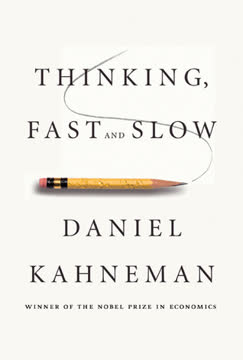




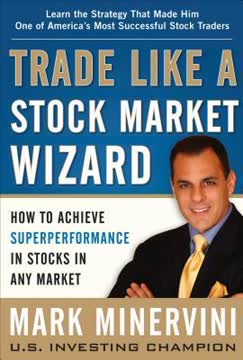


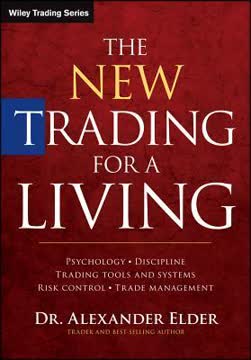
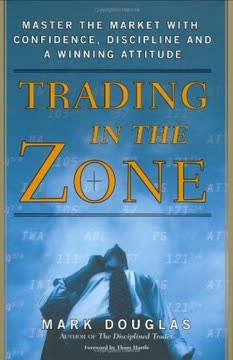
Download PDF
Download EPUB
.epub digital book format is ideal for reading ebooks on phones, tablets, and e-readers.
